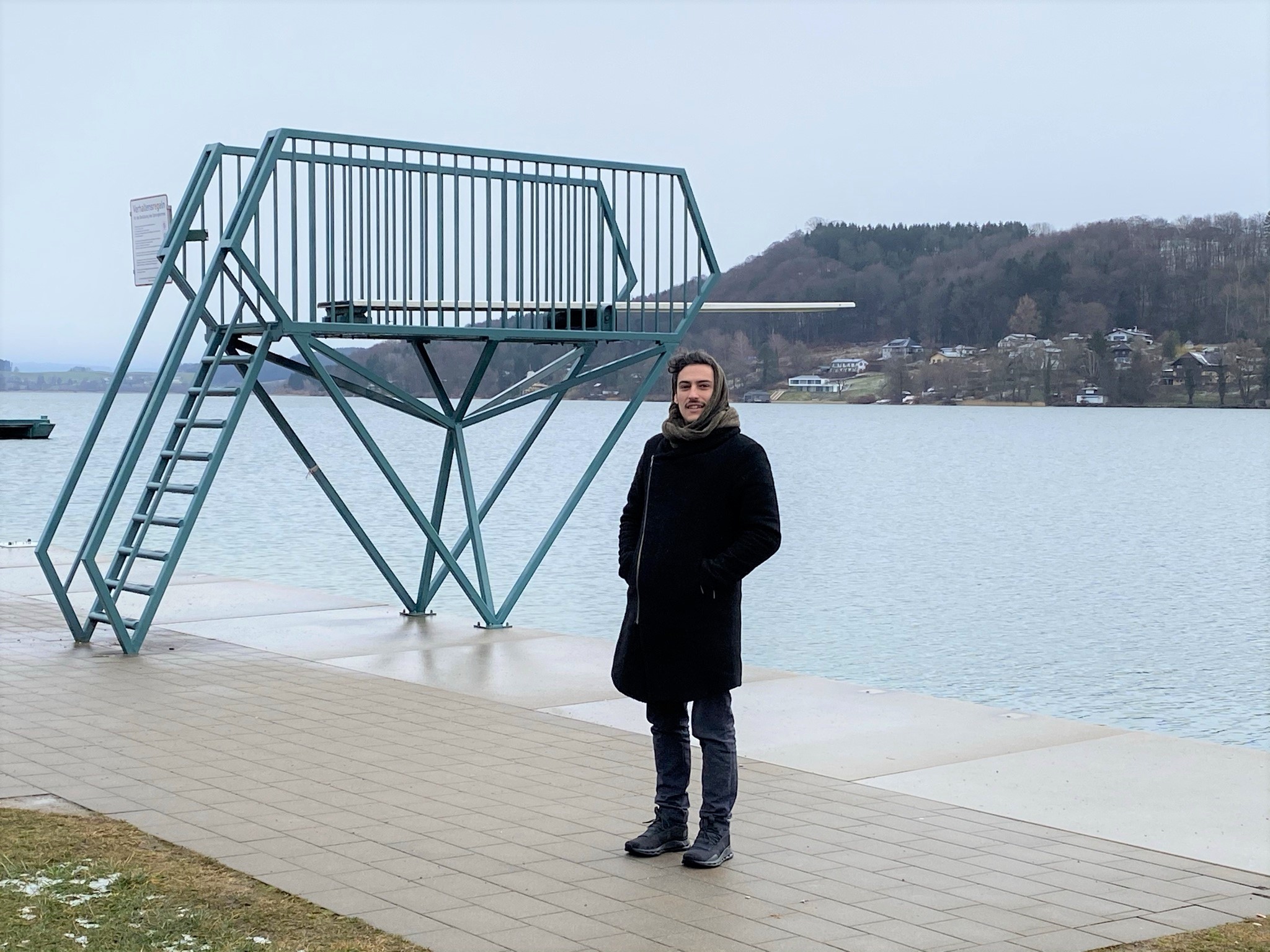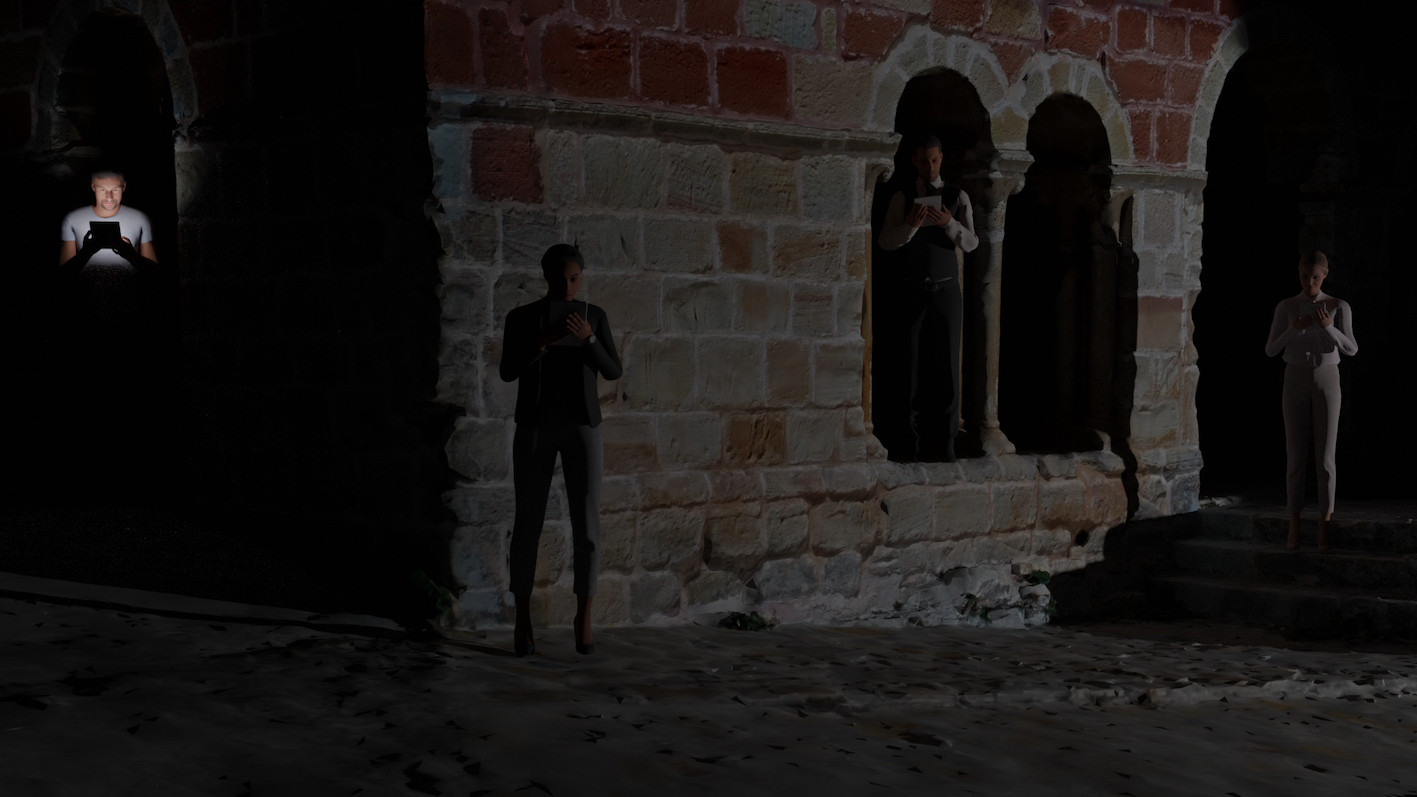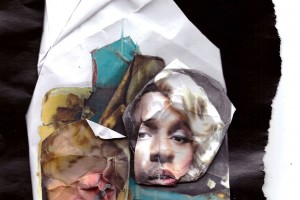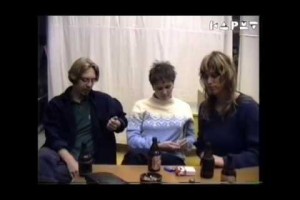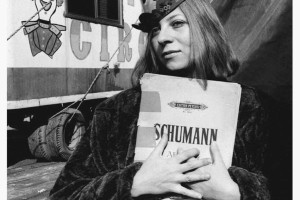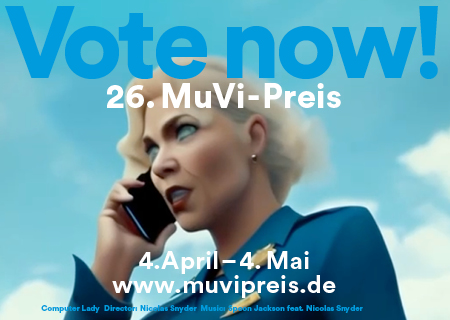Stefano D’Alessio „Time is more important than commodities“
Asked what he looks for in the work of other artists, Stefano D’Alessio speaks of his interest in works that are „able to use their innovative aspect to create a fresh discourse that can resonate with parts of society and communities.“ He points out works „that have uncertain and open meaning“ and „move people in different directions and generate discourse rather then when something has a rigid definition.“
It does not come by surprise that the new media artist (among other things, D’Alessio is also a performer, a composer and an educator) aims to achieve similar goals with his own works. „I am obsessed with using new technologies as creative instruments and I am conceptually focused on the consequences that these media bring in societies“.
„Out of Countenance“, his collaboration with Martina Menegon, performed 2013 in Vienna, is a good example for the dynamic within this process. Especially in a year like 2021, when we all experience each other mostly by interacting within the digital paradigma only. As much as both artists in the first place seem to operate primarly alone with the possibility space the media offers them, it transforms fast into a weird couple kind of dialogue-mutation thing as their faces merge and become one freaky physiognomy – and by that question the greek original of the word, meaning the act of assessing a person’s character or personality from their outer appearance.
Stefano D’Alessio body of works is united by his „general interest on how humans relate to technology.“ Therefor the set-up does not have to be super nerdy and state of the art, not at all. A work like „My machines stole my job (and it’s fine)“ from 2020 for example is reflecting on the fear of machines replacing human’s work in a rather meditativ way and represents his current interest in „how the dynamics of the contemporary, attention economy based, internet influences us as individuals and as communities.“
For SUPERGAU, a festival dedicated to contemporary art, happening between 14th and 24th of May 2021 in the are of Flachgau, Salzburg, Stefano D’Alessio created the multimedia light- and theater performance “Here, Somewhere Else“, situated on two different locations.
Stefano, you are originally from Italy, right now you live in Vienna. Both countries have been hit quite hard from the current pandemic.
I can’t be very sure about Italy. I escaped from there long time ago and it is a place I try to avoid. I always found it very difficult to make things happen there, there is no money for culture and there are a lot of desperate artists who are willing to work for free or for “visibility”. I can’t even imagine what’s the Italian cultural situation in this extreme moment of human history.
The environment is different in Austria, this is something I noticed soon when I moved to Vienna ten years ago. Artists have an other social status compared to Italy and there are way more funds for culture and arts. Of course it’s not paradise and lots of things still need to be fixed, but there are plenty of movements and cultural organizations fighting to improve the lives of creative people.
How did you experience the last year?
Whats the impact you see on the cultural environments in Italy and Austria in general and the fields you are active on in specific?
To be sincere, 2020 hasn’t been bad for me, there has been financial support for artists and with that I survived the year with no problems. Having said that, I have to specify that I am used to live on a minimal budget, I keep in mind that time is more important than commodities. I often turn down lucrative boring jobs offers as I rather prefer to spend my full time on my personal research.
An other fortune I have is that I always have been used to work in a kind of obsessive isolation, which is very lockdown compatible. Sometimes my eyes don’t see the sky for days, as I loose myself days and nights playing with whatever I am experimenting with. Clearly it is quite heavy not to be able to see friends, hang in noisy bars, sharing beers with strangers and be physically present in class while teaching, but I consider myself lucky in the apocalypse.
To which degree do you feel your artistic identity and work body is political?
My work revolves around technology and how technology is applied in the world we live in is always a political matter: see the US elections in 2016, or the problems with recent A.I. predictive policing tools that showed up to be clearly racially biased and so on and so forth. Having said that it’s not my aim to work in political way, I spent my life on visual art and music, that’s what I can do better.
Of course there are political aspects that come with the topics I am interested in, but I explore and face these topics in a personal way and I am sure that anything political should come from collective discourses and fair exchange, not individual opinions.
I think both of us grew up in countries that messed up big time on that matter in the past century.
What do you wish for regards the way the audience perceives and interacts with your performances and installations?
I hope for the audience to be sensorially transported within the piece. I like to lock the attention on a cognitive level first and then to introduce something more conceptual. I hope to create an understanding on the situations the work is about, hopefully something that stimulates the viewer to develop their own interest on the topics, something that tickles their minds when they are back home.
I try not to set too precise intentions with the communication, I learned that each viewer is different, interacts differently, resonates differently, so I think it’s better to open wide doors where each person can relate in their own way than to argue for a precise path.
You are deeply interested in the relationship of the real world and the digital world in general and the implications this brings along for us as humans regards the digital mirroring of ourselves and the digital prolongation.
Are you able to tell what stimulated your interest in the first place? – has there been a core experience?
Do you feel your personal perspective on this topic has changed over the years?
I think it started when I was 14: my brother – who is 12 years older then me – pushed my parents to buy a Mac and installed a cracked version of Photoshop 6 on it, I still remember the look of that beautiful Mac OS 9. At the time I was studying paint and decoration and to jump from years of drawing on paper and painting on canvas to make images with a computer was very exciting. In the same period I started playing drums in some high school metal bands, music wasn’t a new thing for me as my mum played guitar and thought me a little.
Few months after my brother got an install disc of Cubase from a friend, immediately I started to be obsessed with that music software, I was using the microphone from a headset to record improvised percussions and playing my electric guitar by directly plugging it in the mini jack input of the computer – not recommended! I had a lot of fun and I started to creatively experiment with distortions and effects, soon recognizing that they can be instruments in themselves and not only a “decoration” to a sound.
A core experience was when I met Klaus Obermaier towards the end of my first university in Venice, I followed a workshop where he taught about interactive technologies and new media. As soon as I realised that I could combine visuals and sounds – and control them in real-time with a laptop and a webcam –, I freaked out and started to sink down the rabbit hole. My personal perspective changed yes: my interest moved from a very individual and technocentric perspective to a more communicative, collective point of view.
Most of my early works – collaborations with Martina Menegon – are very hermetic and difficult to understand for non tech experts. I work differently now. I still do very complex works where I need to build my own software, create my own hardware set up and work on sound-design, music and visuals by myself, but I try to use technology to convey something, tell a story, show a situation, transport a mood, and not to show off technology itself.
You work besides being a media artist and composer as an educator. How do you experience the cultural dialogue of those two areas of work? What do you try to communicate to your students? And what do you take from them in return?
I am always amazed about how fluid the connection between teaching and making art is.
I never hold the same lecture or the same workshop twice. It takes a lot of time to prepare my teaching each semester, if I need to teach 20 hours, I prepare for 60 hours at least. I am not clever at all about that as I like to reinvent the wheel each time.
But the beautiful thing is that – while I focus on what I can pass to the students and experiment with which are the best ways to convey certain knowledge –, I get a lot of new ideas and I develop a lot of tools that I am later able to use for my own artistic practice. When I teach I try to understand what’s the standpoint of each student towards technology. I teach in different universities, with different curricula and each student is different, but for the sake of clarity I’ll generalise them in two kinds (sorry students!).
The first are the creative nerds: who have an insatiable curiosity for any kind of technological tool and can never stop adding layers of complexity to their projects, eventually their work becomes a messy Frankenstein of “nerdyness”. To them I teach how to do a more with less, keeping it simple – on the surface at least – and to remember that the audience has probably no idea about what kind of complex new technology they are developing. I try to convince them that the viewer needs to be involved in other – non-nerd – ways.
From them I learn a lot: new technologies are an immense and ever-changing world and my practice is dealing with a part of that world, many times they teach me about new pieces of software or hardware I don’t know about or new technological possibilities and researches.
The second type of students are the technophobic artists: who are either afraid of dealing with the complexities of technology or have a wrong idea of what media art is, as they maybe saw plenty of silly, hyper spectacular, branded building projection mappings or some non-sensical, flashy VJ-ing at the club. To them I show ways of using technology in a simple and creative way, to get inspired by and be open to the tools, to play with their possibilities without feeling overwhelmed by complexity or without pre-judging what the result will be, to be less conceptual and more experimental. They often use the tools I teach them in extremely clever, simple and alien ways. Sometimes I am a little envy of their fresh and original approach.
Coming from a music socialization with bands (Criminal Café, Running Fetus) in which you played drums and guitar, and sang, you are currently producing electronic and electro-acoustic music. What made you change from a collective work habitus to the one of a singular producer?
I always made music also alone, in front of a computer screen and I also appreciated the physicality of a band on a stage. Both bands I played in were very performative in concert, there was a lot of sweating, jumping, head-banging.
I like to think of performative acts as rites, collective gatherings, where people go through a ritual, a dramaturgical process in which the performer’s body – technology not excluded – becomes a conveyer for a shared meaning. And this can be achieved with human body on a stage, but also with a technological “presence” that acts as a complicit performing partner.
You often collaborate with dance- and theatre-collectives, how do I have to imagine that process: are you bringing in final compositions and works into that process or is this much more fluent?
I don’t think anything good can come out when sticking any finished thing over anything else, I believe it is extremely important that all the components of a piece are in close discourse between themselves and flourish in a reciprocal influence during the creative process.
When I do music for somebody else’s project I always need to see first what they are working on and how, then I give them some music as a reaction to what I saw and this influences their piece, maybe sparkles some new ideas. The process goes on like this, like a continuous ping pong, it’s a longer process but lots of nice unexpected things come out of it.
How did you experience the working process with the two artistic directors and curators of SUPERGAU, Tina Heine and Theo Deutinger so far?
It has been quite different from anything I’ve done so far. We are working on this festival since months, I have the feeling we somehow all know each other, there is a continuous exchange, stuff that needs to be done, but also help that comes from others. Its a very organic network and involving project and it is enormous!
You are participating to SUPERGAU with a work named “Here, Somewhere Else“, a multimedia light- and theater performance with a choir of four singers that will be performed between 9pm and 10pm at night.
Can you share the basic idea of the work with us?
Why did you chose this specific hour?
Looking at the SUPERGAU map I do see two locations for “Here, Somewhere Else“ – why so?
The project is a multimedia choir concert. Four singers – each looking at tablet device – sing and chat about situations they find themselves in. The theme is the contrast between being physically present somewhere and being virtually present in a cyberspace.
Everything in the piece is based on this physical / cyber dichotomy.
There are two kinds of sounds: the choir’s voice and an lectronically generated bass sound.
And there are two kinds of lights: the devices’ screens – flashing the singers faces in synchronous rhythm with their voices – and the ambient lights which are composed of an array of spots that lit up the environment and moves in sync with the bass sound.
The time of the performance is at sunset, it’s romantic, but most importantly the piece needs darkness because of the light play happening on the singers faces and on the environment.
The whole piece is about being present in two places, so we thought it would make sense to also split the performances in two different locations.
Stefano, which of the other works of SUPERGAU are you most keen to experience?
I can’t really tell. I heard a lot of very nice ideas, explosions, gigantic cigarettes, landscape elements, neon lights on water, power station high voltage music, landscape digitalisation and many more. I think I’ll have to split myself in two and see all of them.
SUPERGAU für zeitgenössische Kunst, 14.–24.May 2021, Flachgau, Land Salzburg









